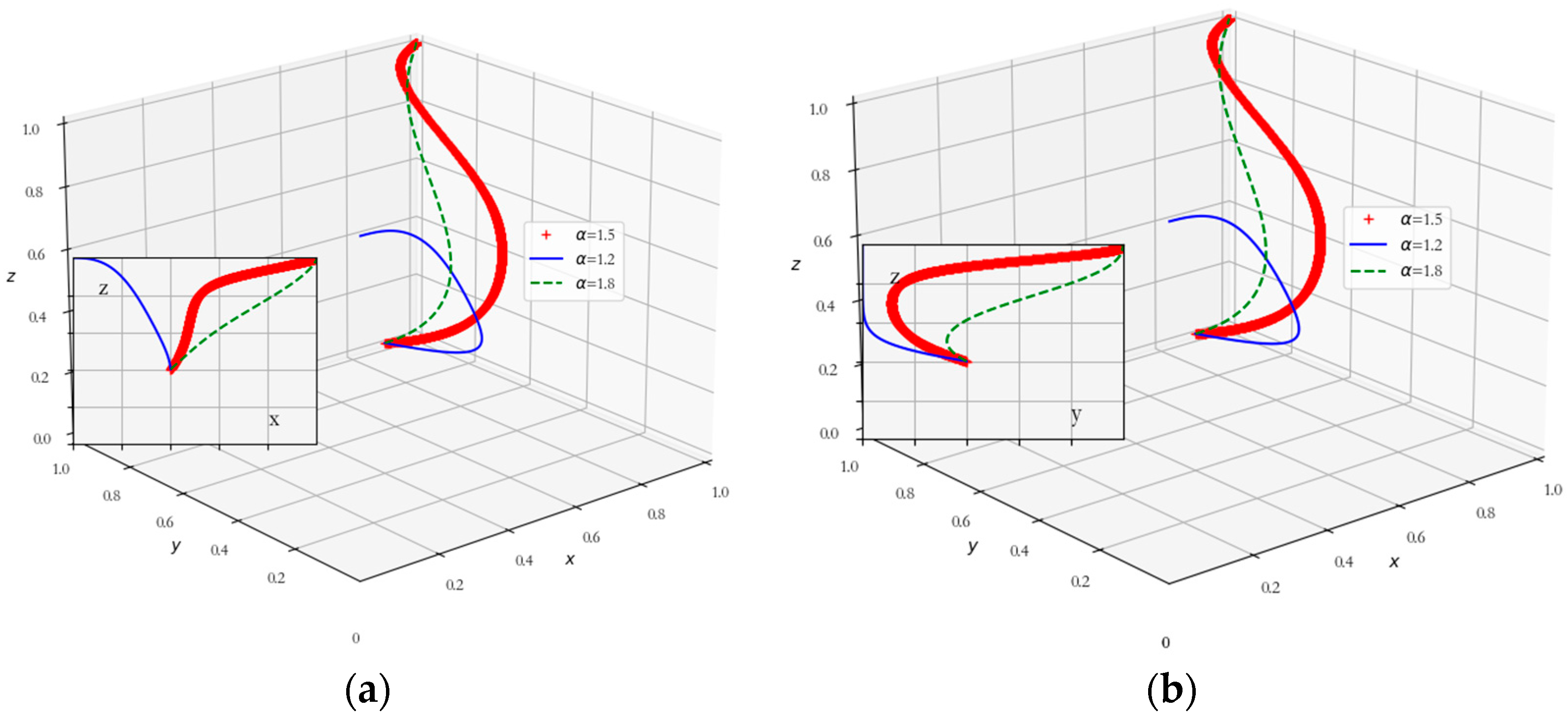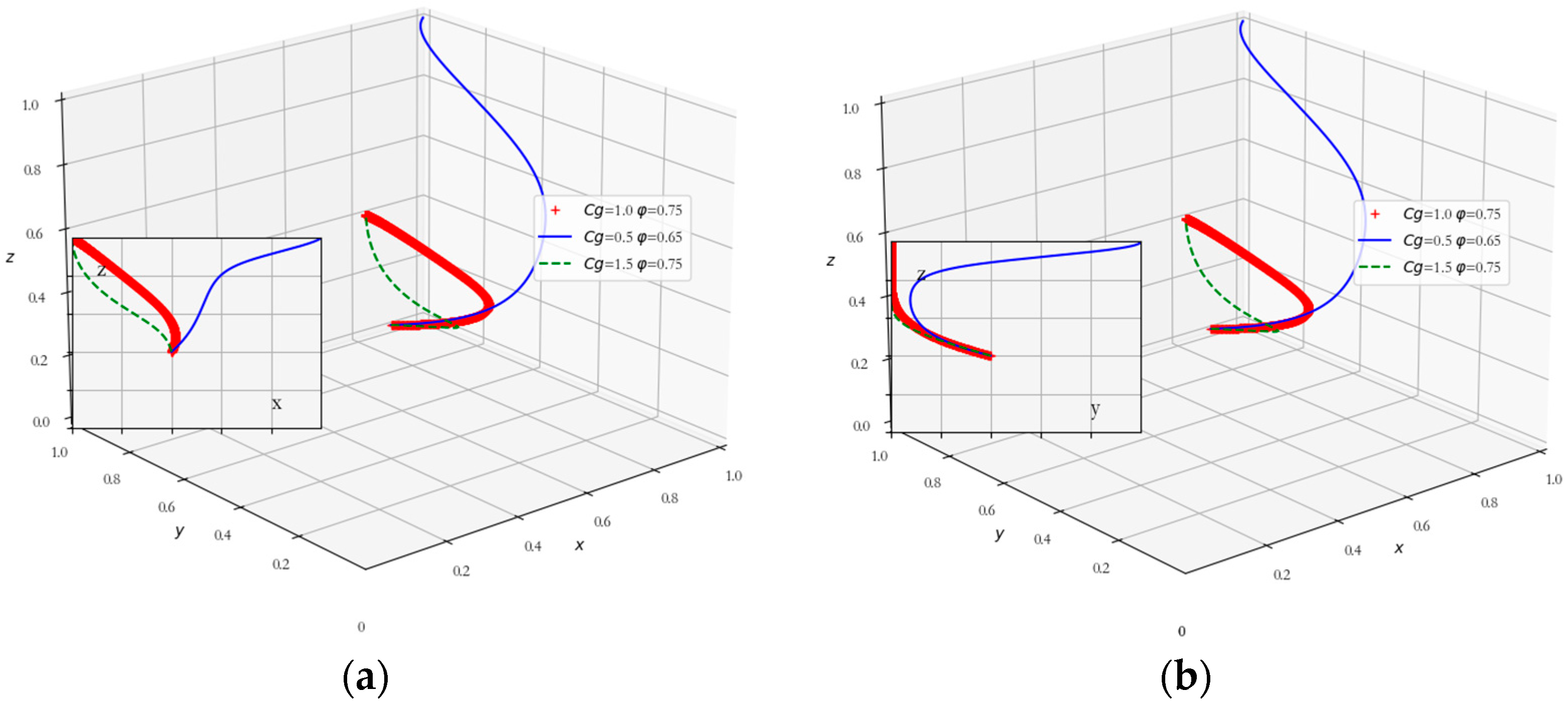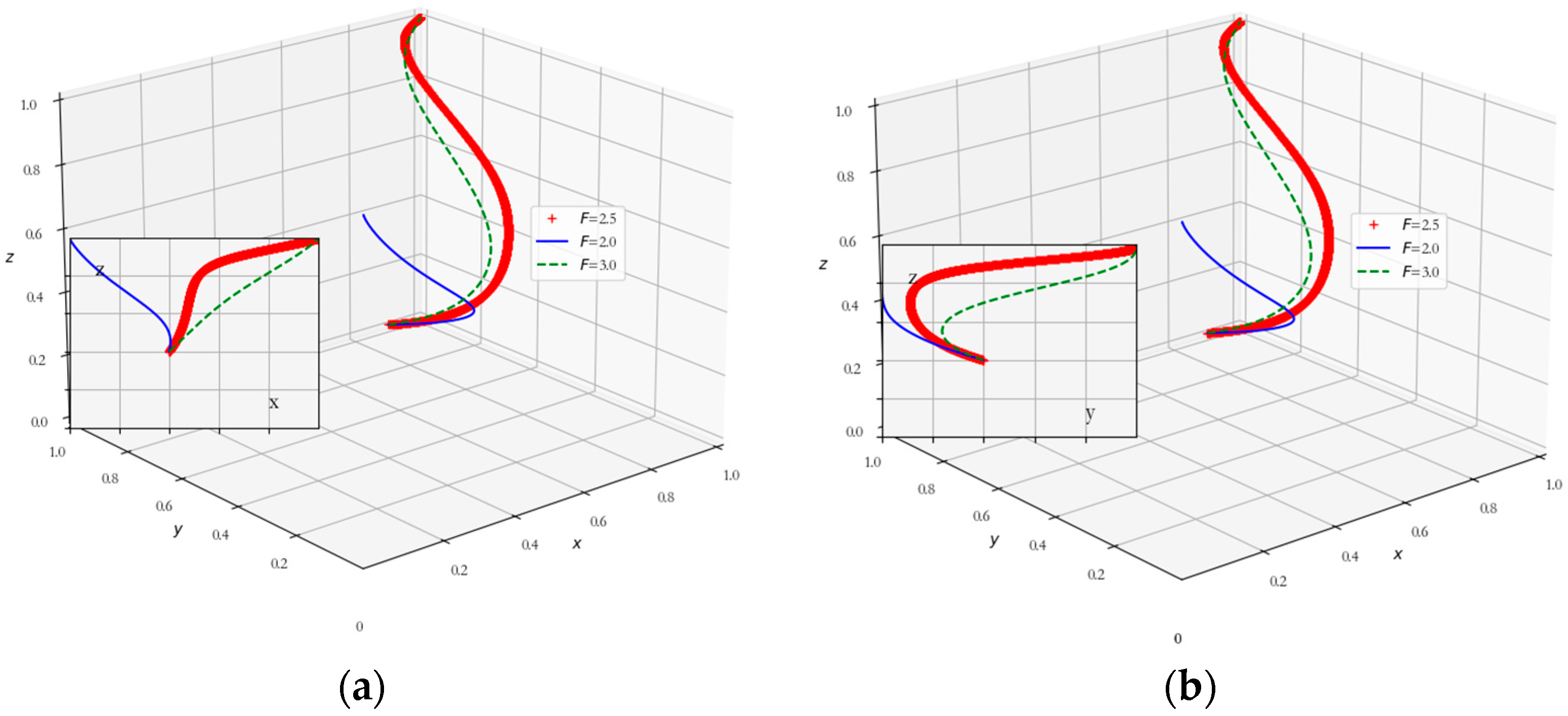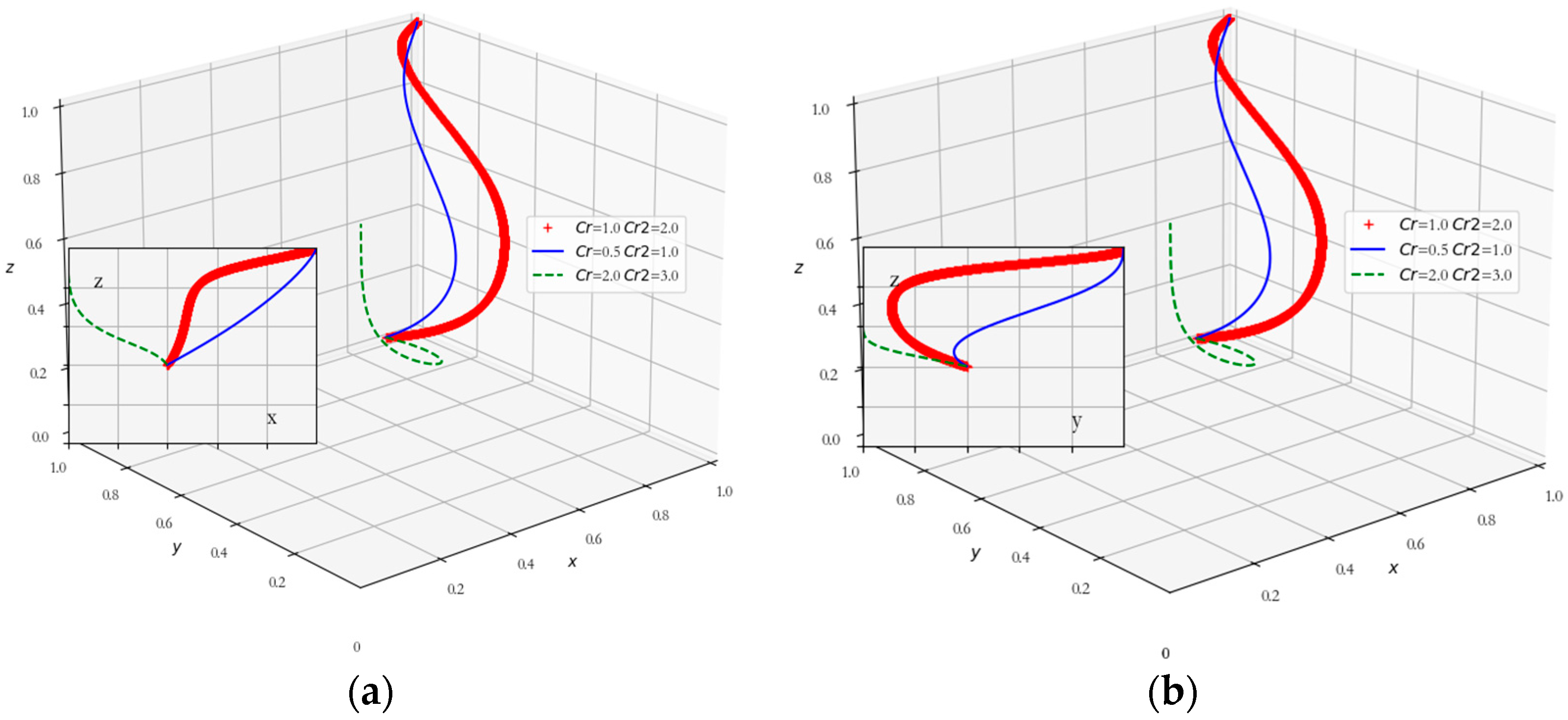How to Improve Collaboration in Sustainable Urban Community Renewal? An Evolutionary Game Model
Abstract
1. Introduction
2. Research Background
2.1. Game Theory in Urban Community Renewal
2.2. Diverse Stakeholder Interest Claims in Urban Community Renewal
3. Methodology
4. Tripartite Evolutionary Game Model for Collaborative Governance
4.1. Model Assumptions and Establishment
| Player | Strategy | Behavioral Logic | Interest Motivation |
|---|---|---|---|
| G | Positive action | Proactive establishment of communication channels, coordination through institutionalized negotiation platforms, and strict supervision [45]. | Maximizing policy performance while avoiding social conflicts. |
| Negative action | Reducing fiscal oversight, and tolerating corporate opportunism to accelerate project completion. | Minimizing administrative costs and political risks when resident-corporate conflicts. | |
| C | Valuing demands | Integrating resident preferences into design, sharing incremental benefits. | Pursuing long-term ROI through social license to operate. |
| Ignoring demands | Concealing construction risks, exploiting regulatory loopholes for excess profits, and bypassing resident consultations [46]. | Short-term profit maximization under information asymmetry, amplified when government supervision weakens. | |
| R | Supporting | Collective action through formal channels, accepting temporary inconvenience for long-term gains. | Securing property rights protection and welfare improvements. |
| Dissenting | Exercising veto power, initiating rights movements, or refusing cost-sharing. | Loss aversion when perceived risks exceed benefits. |
4.2. Replicating Dynamic Equations
4.3. Equilibrium Analysis of Evolutionary Game
- (1)
- Government-led scenario. Early urban renewal was governed by a government-led model, prioritizing basic livelihoods and social welfare with strong governmental leadership and investment, yet lacking in management and disregarding social and market forces. The government, as the main implementer and funder, favored “positive action” for smooth project execution, while companies engaging in direct government contracts, driven by economic interests, favored an “ignoring demands” strategy. Residents, facing information asymmetry and limited government empowerment, have minimal influence on government decisions regarding urban community renewal. As beneficiaries of government welfare policies, they tend to adopt a strategy of “supporting”. This scenario corresponds to the equilibrium point . In this context, the equilibrium point from Table 4 becomes stable under two conditions: ① When government fines on companies exceed its regulatory and coordination costs (), indicating strict penalties on non-compliance and low resident coordination costs. ② When the companies’ net profit from profit-centric strategies outstrips the benefits of collaborative governance (), reflecting the early phase of urban renewal dominated by government, with high profits from speculation and less visible benefits of cooperation.
- (2)
- Market-led scenario. The reform of land and housing systems has led to increased private investment and market dominance, focusing more on economic than public interests. The government now mainly offers preferential policies and limited initial funding to companies, reducing financial burdens in urban renewal projects and adopting a “negative action” approach. Companies, driven by profit, dominate projects with commercial developments, often overlooking social responsibilities and favoring an “ignoring demands” strategy. This has marginalized residents, evidenced by gentrification and displacement, compelling them to adopt a “supporting” strategy. This situation aligns with equilibrium point , as per Table 4. For to be stable, the government’s regulatory fines must be less than its regulatory costs plus coordination costs (), reflecting minimal government intervention, over-reliance on companies for project construction, and resident marginalization.
- (3)
- Multi-participatory scenario (ideal stabilization point): For high-quality, human-centered urban development, community residents have emerged as the third balancing force in urban community renewal, alongside the government and companies, with their interests and needs increasingly considered within the governance system. The government focuses on coordination and promotion, aiming for “positive action” to advance public interests and improve living standards, thus enhancing its reputation. Companies, as major investors, participate in collaborative governance, gaining collaborative benefits and boosting their social responsibility, tending to “value demands”. Residents exercise participatory rights through local committees and organizations, aiming for conflict mediation and joint governance, opting for “supporting”. This model corresponds to equilibrium point in Table 4. To be stable, two conditions must be met: ① the government’s costs in active participation must be offset by the benefits of collaborative governance (), indicating active involvement and significant synergistic advantages. ② the net profit companies’ gain from profit-centric strategies must be lower than the benefits of collaborative governance (), reflecting reduced profit margins and increased synergies due to active government and resident involvement.
5. Numerical Simulation and Analysis
5.1. Data and Parameters
5.2. Collaborative Advantage Effects on Evolutionary Game Models
5.3. Impact of Speculative Benefits on Evolutionary Game Models
5.4. Impact of Government Regulation on Evolutionary Game Models
5.5. Impact of Coordination Costs on Evolutionary Game Models
5.6. Discussion and Practical Suggestions
6. Conclusions and Limitations
Author Contributions
Funding
Data Availability Statement
Conflicts of Interest
References
- Adair, A.; Berry, J.; McGreal, S.; Deddis, B.; Hirst, S. The Financing of Urban Regeneration. Land Use Policy 2000, 17, 147–156. [Google Scholar] [CrossRef]
- Zheng, L.; Zheng, Y.; Fu, Z. The Impact of Urban Renewal on Spatial-Temporal Changes in the Human Settlement Environment in the Yangtze River Delta, China. Land 2024, 13, 841. [Google Scholar] [CrossRef]
- The Communist Party of China Central Committee and the State Council. Opinions on Continuously Promoting Urban Renewal Actions. Available online: https://www.gov.cn/zhengce/202505/content_7023880.htm (accessed on 15 May 2025).
- Li, D.; Du, B.; Zhu, J. Evaluating Old Community Renewal Based on Emergy Analysis: A Case Study of Nanjing. Ecol. Model. 2021, 449, 109550. [Google Scholar] [CrossRef]
- Shi, J.; Duan, K.; Wu, G.; Si, H.; Zhang, R. Sustainability at the Community Level: A Bibliometric Journey around a Set of Sustainability-related Terms. Sustain. Dev. 2022, 30, 256–274. [Google Scholar] [CrossRef]
- Zheng, X.; Le, Y.; Chan, A.P.C.; Hu, Y.; Li, Y. Review of the Application of Social Network Analysis (SNA) in Construction Project Management Research. Int. J. Proj. Manag. 2016, 34, 1214–1225. [Google Scholar] [CrossRef]
- Zhou, Y.; Lan, F.; Zhou, T. An Experience-Based Mining Approach to Supporting Urban Renewal Mode Decisions under a Multi-Stakeholder Environment in China. Land Use Policy 2021, 106, 105428. [Google Scholar] [CrossRef]
- Li, L.; Zhu, J.; Duan, M.; Li, P.; Guo, X. Overcoming the Collaboration Barriers among Stakeholders in Urban Renewal Based on a Two-Mode Social Network Analysis. Land 2022, 11, 1865. [Google Scholar] [CrossRef]
- Xie, D.; Zhu, X. Social Conflict, Interest Game and Renovation of Historic Districts: A Case Study of Enning Road in Guangzhou. Urban Dev. Res. 2014, 21, 86–92. [Google Scholar]
- General Office of the Ministry of Natural Resources. Natural Resources Ministry Policy on Supporting Old Neighborhood Renewal. Available online: https://www.gov.cn/zhengce/zhengceku/202406/content_6957452.htm (accessed on 24 May 2024).
- Jung, T.H.; Lee, J.; Yap, M.H.T.; Ineson, E.M. The Role of Stakeholder Collaboration in Culture-Led Urban Regeneration: A Case Study of the Gwangju Project, Korea. Cities 2015, 44, 29–39. [Google Scholar] [CrossRef]
- Liu, G.; Wei, L.; Gu, J.; Zhou, T.; Liu, Y. Benefit Distribution in Urban Renewal from the Perspectives of Efficiency and Fairness: A Game Theoretical Model and the Government’s Role in China. Cities 2020, 96, 102422. [Google Scholar] [CrossRef]
- Chan, E.; Lee, G.K.L. Critical Factors for Improving Social Sustainability of Urban Renewal Projects. Soc. Indic. Res. 2007, 85, 243–256. [Google Scholar] [CrossRef]
- Nachmany, H.; Hananel, R. The Urban Renewal Matrix. Land Use Policy 2023, 131, 106744. [Google Scholar] [CrossRef]
- Zhang, J.; Yang, X.; Wang, H. Age-Friendly Regeneration of Urban Settlements in China: Game and Incentives of Stakeholders in Decision-Making. Land Use Policy 2021, 111, 105745. [Google Scholar] [CrossRef]
- Tajani, F.; Morano, P.; Di Liddo, F.; La Spina, I. An evaluation methodological approach to support the definition of effective urban projects: A case study in the city of Rome (Italy). Sustain. Dev. 2024, 8, 31–53. [Google Scholar] [CrossRef]
- Castañer, X.; Oliveira, N. Collaboration, Coordination, and Cooperation Among Organizations: Establishing the Distinctive Meanings of These Terms Through a Systematic Literature Review. J. Manag. 2020, 46, 965–1001. [Google Scholar] [CrossRef]
- Ansell, C.; Gash, A. Collaborative Governance in Theory and Practice. J. Public Adm. Res. Theory 2008, 18, 543–571. [Google Scholar] [CrossRef]
- Wang, H.; Zhao, Y.; Gao, X.; Gao, B. Collaborative Decision-Making for Urban Regeneration: A Literature Review and Bibliometric Analysis. Land Use Policy 2021, 107, 105479. [Google Scholar] [CrossRef]
- Dargan, L. Participation and Local Urban Regeneration: The Case of the New Deal for Communities (NDC) in the UK. Reg. Stud. 2009, 43, 305–317. [Google Scholar] [CrossRef]
- Healey, P. Collaborative Planning in Perspective. Plan. Theory 2003, 2, 101–123. [Google Scholar] [CrossRef]
- Kasperson, R.E.; Renn, O.; Slovic, P.; Brown, H.S.; Emel, J.; Goble, R.; Kasperson, J.X.; Ratick, S. The Social Amplification of Risk: A Conceptual Framework. Risk Anal. 1988, 8, 177–187. [Google Scholar] [CrossRef]
- Lim, H.; Kim, J.; Potter, C.; Bae, W. Urban Regeneration and Gentrification: Land Use Impacts of the Cheonggye Stream Restoration Project on the Seoul’s Central Business District. Habitat Int. 2013, 39, 192–200. [Google Scholar] [CrossRef]
- Eissa, R.; Eid, M.S.; Elbeltagi, E. Current Applications of Game Theory in Construction Engineering and Management Research: A Social Network Analysis Approach. J. Constr. Eng. Manag. 2021, 147, 04021066. [Google Scholar] [CrossRef]
- Li, M.; Peng, P.; Ao, Y.; Zhou, Z.; Zuo, J.; Martek, I. Equity in Public Decision-Making: A Dynamic Comparative Study of Urban–Rural Elderly Care Institution Resource Allocation in China. Humanit. Soc. Sci. Commun. 2024, 11, 1526. [Google Scholar] [CrossRef]
- Mayer, I.S.; van Bueren, E.M.; Bots, P.W.G.; van der Voort, H.; Seijdel, R. Collaborative Decisionmaking for Sustainable Urban Renewal Projects: A Simulation—Gaming Approach. Environ. Plan. B 2005, 32, 403–442. [Google Scholar] [CrossRef]
- Nowak, M.A.; Sigmund, K. Evolutionary Dynamics of Biological Games. Science 2004, 303, 793–799. [Google Scholar] [CrossRef] [PubMed]
- Liu, D.; Xiao, X.; Li, H.; Wang, W. Historical Evolution and Benefit–Cost Explanation of Periodical Fluctuation in Coal Mine Safety Supervision: An Evolutionary Game Analysis Framework. Eur. J. Oper. Res. 2015, 243, 974–984. [Google Scholar] [CrossRef]
- He, F.; Yi, Y.; Si, Y. Evolution Process of Urban Industrial Land Redevelopment in China: A Perspective of Original Land Users. Land 2024, 13, 548. [Google Scholar] [CrossRef]
- Chen, D.; Chen, B. Evolutionary Game Analysis on Decision-Making Behaviors of Participants in Mega Projects. Humanit. Soc. Sci. Commun. 2023, 10, 921. [Google Scholar] [CrossRef]
- Jia, C.; Zhang, R.; Wang, D. Evolutionary Game Analysis of BIM Adoption among Stakeholders in PPP Projects. Complexity 2021, 2021, 5553785. [Google Scholar] [CrossRef]
- Gao, R.; Liu, J. Selection of Government Supervision Mode of PPP Projects during the Operation Stage. Constr. Manag. Econ. 2019, 37, 584–603. [Google Scholar] [CrossRef]
- Kinossian, N. ‘Urban Entrepreneurialism’ in the Post-Socialist City: Government-Led Urban Development Projects in Kazan, Russia. Int. Plan. Stud. 2012, 17, 333–352. [Google Scholar] [CrossRef]
- Trillo, C. Urban Regeneration and New Partnerships among Public Institutions, Local Entrepreneurs and Communities. Adv. Eng. Forum 2014, 11, 303–313. [Google Scholar] [CrossRef]
- Sakamoto, M. The Role of Social Capital in Community Development: Insights from Behavioral Game Theory and Social Network Analysis. Sustain. Dev. 2024, 32, 5240–5258. [Google Scholar] [CrossRef]
- Camerin, F.; Córdoba Hernández, R. What Factors Guide the Recent Spanish Model for the Disposal of Military Land in the Neoliberal Era? Land Use Policy 2023, 134, 106911. [Google Scholar] [CrossRef]
- Brenner, N.; Marcuse, P.; Mayer, M. Cities for People, Not for Profit. City 2009, 13, 176–184. [Google Scholar] [CrossRef]
- Jones, M.; Ward, K. Excavating the Logic of British Urban Policy: Neoliberalism as the “Crisis of Crisis–Management”. Antipode 2002, 34, 473–494. [Google Scholar] [CrossRef]
- Weibull, J.W. Evolutionary Game Theory; MIT Press: Cambridge, MA, USA, 1997; ISBN 978-0-262-73121-8. [Google Scholar]
- Bowles, S. Microeconomics: Behavior, Institutions, and Evolution. In Microeconomics; Princeton University Press: Princeton, NJ, USA, 2009; ISBN 978-1-4008-2931-6. [Google Scholar]
- Sun, C.; Wang, M.; Man, Q.; Wan, D. Research on the BIM Application Mechanism of Engineering-Procurement-Construction Projects Based on a Tripartite Evolutionary Game. J. Constr. Eng. Manag. 2023, 149, 04022182. [Google Scholar] [CrossRef]
- Taylor, P.D.; Jonker, L.B. Evolutionary Stable Strategies and Game Dynamics. Math. Biosci. 1978, 40, 145–156. [Google Scholar] [CrossRef]
- Huxham, C.; Vangen, S.; Huxham, C.; Eden, C. The Challenge of Collaborative Governance. Public Manag. Rev. 2000, 2, 337–358. [Google Scholar] [CrossRef]
- Lasker, R.D.; Weiss, E.S.; Miller, R. Partnership Synergy: A Practical Framework for Studying and Strengthening the Collaborative Advantage. Milbank Q. 2001, 79, 179–205. [Google Scholar] [CrossRef]
- Nie, Q.; Zhang, L.; Tong, Z.; Hubacek, K. Strategies for Applying Carbon Trading to the New Energy Vehicle Market in China: An Improved Evolutionary Game Analysis for the Bus Industry. Energy 2022, 259, 124904. [Google Scholar] [CrossRef]
- Liang, J.; Zhang, M.; Yin, Z.; Niu, K.; Li, Y.; Zhi, K.; Huang, S.; Yang, J.; Xu, M. Tripartite Evolutionary Game Analysis and Simulation Research on Zero-Carbon Production Supervision of Marine Ranching against a Carbon-Neutral Background. Front. Ecol. Evol. 2023, 11, 1119048. [Google Scholar] [CrossRef]
- Chu, X.; Shi, Z.; Yang, L.; Guo, S. Evolutionary Game Analysis on Improving Collaboration in Sustainable Urban Regeneration: A Multiple-Stakeholder Perspective. J. Urban Plann. Dev. 2020, 146, 04020046. [Google Scholar] [CrossRef]
- Ritzberger, K.; Weibull, J.W. Evolutionary Selection in Normal-Form Games. Econometrica 1995, 63, 1371–1399. [Google Scholar] [CrossRef]
- Zhang, X.; Du, L.; Song, X. Identification of Urban Renewal Potential Areas and Analysis of Influential Factors from the Perspective of Vitality Enhancement: A Case Study of Harbin City’s Core Area. Land 2024, 13, 1934. [Google Scholar] [CrossRef]
- Wang, H.; Long, Z.; Jia, K.; Zhang, X.; Liang, X. Tactics to Balance Benefits among Stakeholders in Government-Led Urban Renewal: Case Study in Guangzhou, China. J. Urban Plan. Dev. 2024, 150, 05024034. [Google Scholar] [CrossRef]
- Scott, R.J.; Merton, E.R.K. When the Going Gets Tough, the Goal-Committed Get Going: Overcoming the Transaction Costs of Inter-Agency Collaborative Governance. Public Manag. Rev. 2021, 23, 1640–1663. [Google Scholar] [CrossRef]
- Liu, G.; Huang, R.; Li, K.; Shrestha, A.; Wang, H.; Cai, M. Exploring the Dilemma of Enterprises Participating in the Old Community Renewal: Perspective of Managers. Cities 2024, 150, 105073. [Google Scholar] [CrossRef]
- Sun, X.; Li, M.; Kang, H.; Shen, Y.; Chen, Q. Combined Effect of Pure Punishment and Reward in the Public Goods Game. Appl. Math. Comput. 2023, 445, 127853. [Google Scholar] [CrossRef]
- Chung, K.-S.; Ely, J.C. Foundations of Dominant-Strategy Mechanisms. Rev. Econ. Stud. 2007, 74, 447–476. [Google Scholar] [CrossRef]








| Notation | Meaning | Note |
|---|---|---|
| Probability that the government chooses a “positive action” strategy | ||
| Probability that a company will choose the strategy of “valuing demands” | ||
| Probability that a resident chooses the “supporting” strategy | ||
| Initial benefits for government in urban community renewal projects | ||
| Initial benefits for companies in urban community renewal projects | ||
| Initial benefits for residents in urban community renewal projects | ||
| Speculative benefits for companies when disregarding residents’ demands and engaging in speculative behavior | ||
| Fines for speculative behavior of companies found under government regulation | ||
| Costs of coordination when residents support urban community renewal | ||
| Costs of coordination when residents dissent urban community renewal | ||
| Government’s basic cost, including regulation, when actively intervening | ||
| Companies’ basic cost for bidding, developing, and implementing projects | ||
| Losses suffered by the government in the event of social instability | ||
| Losses suffered by companies in the event of social instability | ||
| Losses suffered by residents in the event of social instability | ||
| Benefit increase coefficient when achieving collaborative governance | ||
| Cost increase ratio for the government when solely bearing coordination costs | ||
| Cost increase ratio for companies when solely bearing coordination costs | ||
| Probability of social risk when residents are dissenting | ||
| Probability of social risk when the government acts negatively | ||
| Probability of social risk when companies belittle demands | ||
| Probability of detecting corporate speculation when the government acts positively | ||
| Government’s proportion of shared costs with companies for resident engagement | ||
| Proportion of benefits obtained by residents from the government when dissenting | ||
| Proportion of benefits obtained by residents from the companies when dissenting |
| Residents | Government | Companies | |
|---|---|---|---|
| Valuing Demands | Ignoring Demands | ||
| Supporting | Positive action | ||
| Negative action | |||
| Dissenting | Positive action | ||
| Negative action | |||
| Equilibrium Point | Jacobian Matrix Eigenvalues | Stable Condition |
|---|---|---|
| Unstable point | ||
| Parameter | Initial Value | Parameter | Initial Value | Parameter | Initial Value |
|---|---|---|---|---|---|
| 0.4 | 1.0 | 0.5 | |||
| 0.4 | 2.0 | 0.4 | |||
| 0.4 | 2.5 | 0.4 | |||
| 10 | 10 | 0.8 | |||
| 10 | 8 | 0.5 | |||
| 5 | 5 | 0.2 | |||
| 5 | 1.5 | 0.3 | |||
| 1.0 | 1.2 | ||||
| 2.0 | 1.5 |
Disclaimer/Publisher’s Note: The statements, opinions and data contained in all publications are solely those of the individual author(s) and contributor(s) and not of MDPI and/or the editor(s). MDPI and/or the editor(s) disclaim responsibility for any injury to people or property resulting from any ideas, methods, instructions or products referred to in the content. |
© 2025 by the authors. Licensee MDPI, Basel, Switzerland. This article is an open access article distributed under the terms and conditions of the Creative Commons Attribution (CC BY) license (https://creativecommons.org/licenses/by/4.0/).
Share and Cite
Sun, H.; Zhang, Y.; Wang, Y.; Chen, J.; Wu, H. How to Improve Collaboration in Sustainable Urban Community Renewal? An Evolutionary Game Model. Land 2025, 14, 1863. https://doi.org/10.3390/land14091863
Sun H, Zhang Y, Wang Y, Chen J, Wu H. How to Improve Collaboration in Sustainable Urban Community Renewal? An Evolutionary Game Model. Land. 2025; 14(9):1863. https://doi.org/10.3390/land14091863
Chicago/Turabian StyleSun, Hui, Yiyue Zhang, Yihan Wang, Jidong Chen, and Huicang Wu. 2025. "How to Improve Collaboration in Sustainable Urban Community Renewal? An Evolutionary Game Model" Land 14, no. 9: 1863. https://doi.org/10.3390/land14091863
APA StyleSun, H., Zhang, Y., Wang, Y., Chen, J., & Wu, H. (2025). How to Improve Collaboration in Sustainable Urban Community Renewal? An Evolutionary Game Model. Land, 14(9), 1863. https://doi.org/10.3390/land14091863





